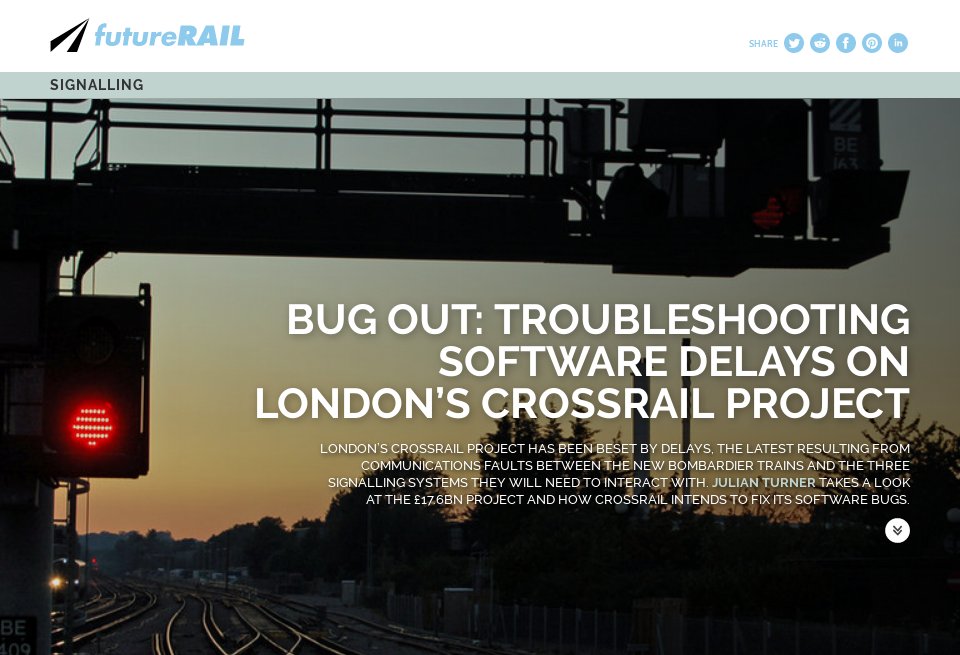Bug Out: Troubleshooting Software Delays on London’s Crossrail Project

Unfortunately, delays in completing train and signalling software mean there are only four class 345 trains being tested on Crossrail’s central section. The issue is that the 70-strong fleet of 200m-long Bombardier trains ordered by TfL have to be integrated with three different signalling systems.
The section of the Elizabeth line between Paddington and Heathrow uses the European Train Control System (ECTS), the core signalling and train control component of ERTMS, the European Rail Traffic Management System. ETCS continuously calculates a safe maximum speed for each train, with cab signalling for the driver and on-board systems that take control if the permissible speed is exceeded.
West of Heathrow and east of Stratford, the trains use an automatic warning system, combined with a train protection and warning system (TPWS). A standard TPWS consists of an on-track transmitter adjacent to a signal – any train that passes it will automatically have its emergency brake activated.
Finally, the central section uses Siemens’ proprietary communications-based train control (CBTC) system, which makes use of the telecommunications between the train and track equipment in order to manage rail traffic and control infrastructure.
Creating interfaces that allow the Bombardier trains to switch from the legacy signalling systems to the newer ones is key to getting the testing back on track and timely delivery of the Elizabeth line.
"Trains are more software than hardware these days," transport expert and author Christian Wolmar told Wired. "The hardware is pretty simple but the software is the real issue. Debugging the software is a massive task."
from Hacker News https://ift.tt/34ieFwn